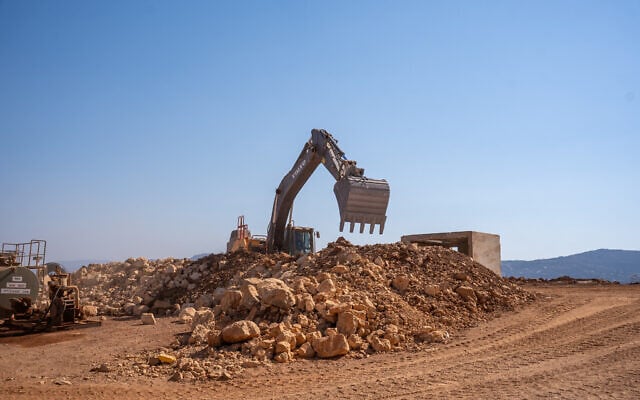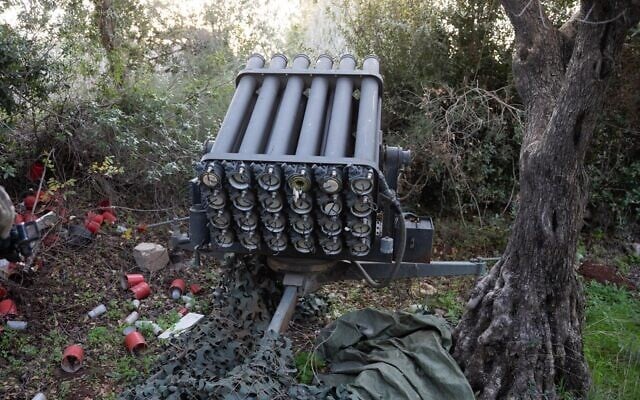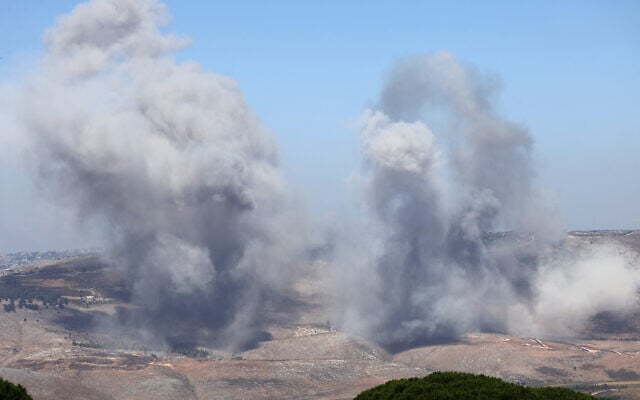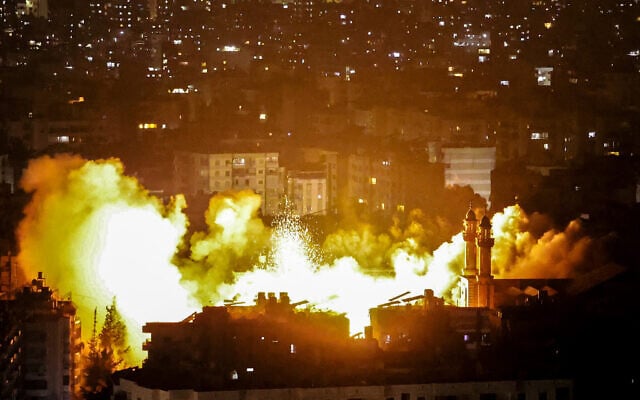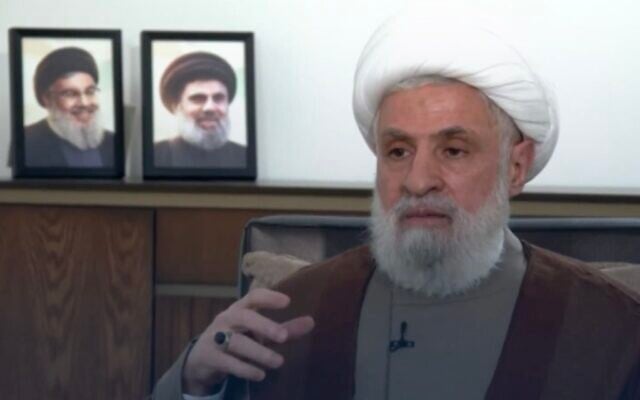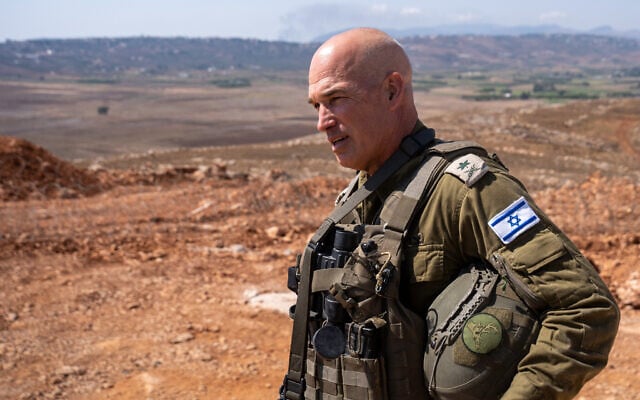


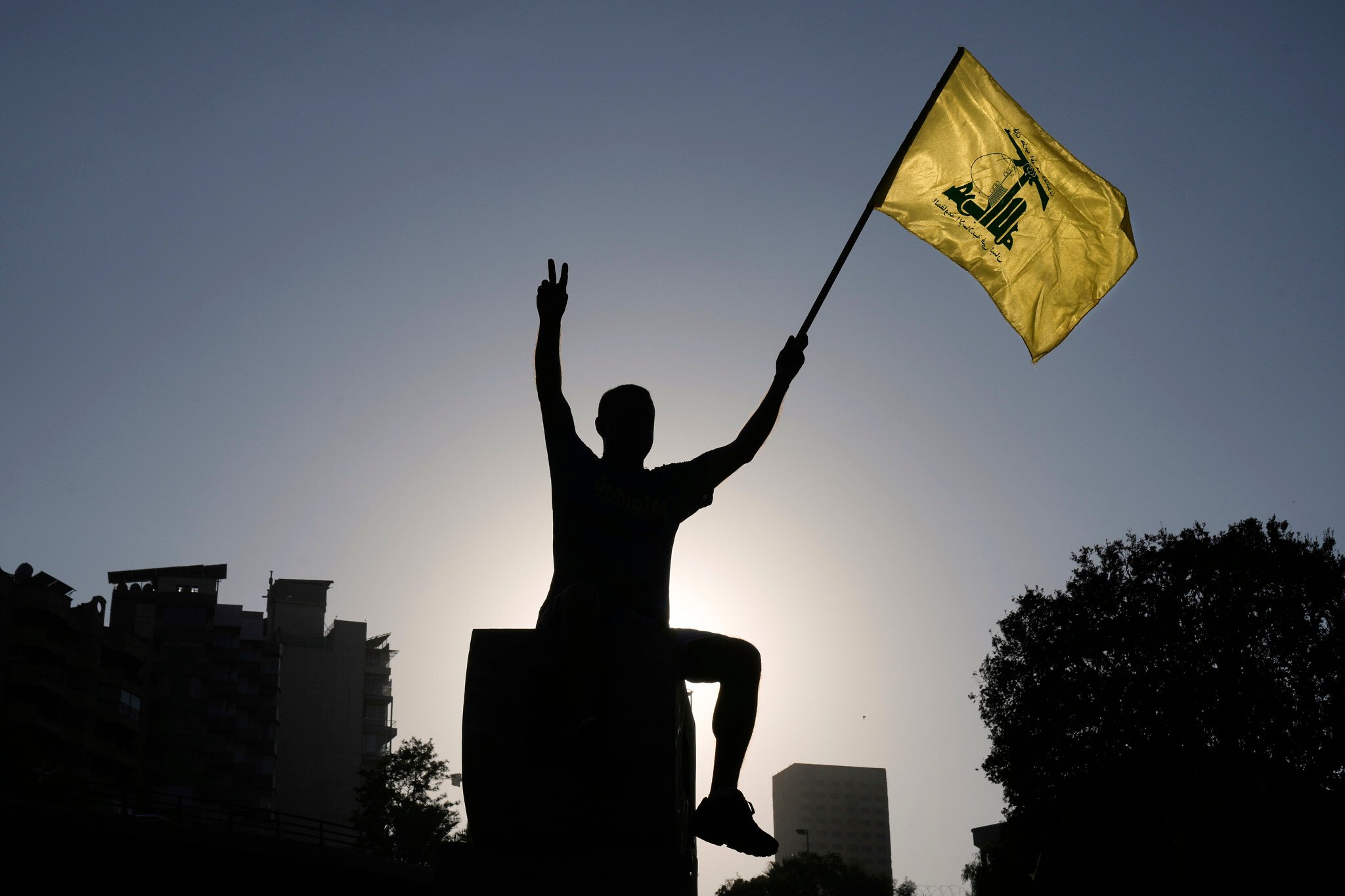
SOUTHERN LEBANON — The Israel Defense Forces assesses that its achievements against Hezbollah since a November ceasefire could potentially bring the Lebanese terror group to complete disarmament, military officials said Tuesday.
The assessment comes as the IDF — since the ceasefire agreement came into effect — has maintained a presence at five strategic points in Lebanon and carries out near-daily airstrikes on Hezbollah operatives and infrastructure it says are violating the conditions of the truce. It also comes amid growing calls in Lebanon for the terror group to hand over its weapons.
Since the beginning of the ceasefire, the IDF says it has carried out over 500 airstrikes against Hezbollah targets in Lebanon, killing at least 230 operatives — the latest on Monday — and destroying over 90 rocket launchers and thousands of rockets, 20 command centers, 40 weapon depots, and five arms production sites, alongside other infrastructure.
The military has also conducted hundreds of ground operations in southern Lebanon, especially in recent months, mostly within the areas near the five posts.
Troops have located caches of weapons and have destroyed infrastructure during these ground operations, the IDF has said.
On Monday, The Times of Israel and other media outlets visited one of the outposts, located just north of Metula.
“We are pushing away every threat and eliminating anyone who tries to threaten and approach the border area,” outgoing IDF Northern Command chief Maj. Gen. Ori Gordin told reporters at the army post. “We are constantly on forward defense and continue to strengthen and fortify it, so that the forces here can carry out strong and significant defense against Hezbollah.”
“Hezbollah is far from us, and we strike it at every opportunity,” he said.
As part of the ceasefire deal, the United States chairs a committee made up of representatives from France, Israel, Lebanon, and the UNIFIL observer force, through which the sides can lodge complaints of violations.
Israel had filed some 1,280 complaints to the committee as of Monday, including 670 that the Lebanese Armed Forces were asked to enforce and 530 after the IDF carried out airstrikes against the alleged violations, the military said.
Of the 670 complaints the LAF was requested to enforce, it dealt with 456. Another 80 were enforced by the IDF with airstrikes, and 18 violations were closed for “being irrelevant.”
Military officials have said that the Lebanese army has been improving with its activities to dismantle Hezbollah, but is still not working as fast as they would like to see.
Still, Hezbollah is considered by the IDF to have been heavily degraded, mostly as a result of the two months of open warfare between September and November. But military officials said that 25-30 percent of the IDF’s achievements against Hezbollah have actually been achieved since the ceasefire, in the strikes aimed at preventing the group from regrouping and rearming.
Out of the terror group’s estimated 25,000 conscripted operatives, between 4,000 and 5,000 were killed and another 9,000 were wounded and are unable to fight, according to the IDF’s assessments. Hezbollah’s elite Radwan force is dealing with similar numbers, with just over half of its 6,000 operatives eliminated or badly wounded.
Hezbollah’s leadership was also wiped out during the war, including at the tactical level, and the IDF has assessed that the group is unable to fill its ranks.
In terms of firepower, Israel claims to have destroyed 70-80% of the group’s rocket fire capabilities. The IDF has estimated that Hezbollah possesses several thousand rockets — the vast majority of them short-range projectiles like mortars, and only several hundred long-range ones.
Most of Hezbollah’s weapons are located in areas north of the Litani River, according to IDF assessments, after the military destroyed the terror group’s infrastructure in the border villages.
There have been limited attempts to restore capabilities in the border villages, to which displaced Lebanese civilians have not yet returned, according to the military.
The IDF, meanwhile, has been operating to thwart any attempt by Hezbollah to build up its capabilities again, in all areas of Lebanon, not just in the south. Earlier this month, the IDF said it bombed a Radwan force training camp in Lebanon’s northeastern Beqaa Valley, and last month struck underground Hezbollah drone factories in Beirut, among other strikes.
Another circumstance that military officials said contributed to the weakening of Hezbollah was the fall of the Bashar al-Assad regime in Syria in December, cutting off the Lebanese terror group’s weapons smuggling route from Iran.
Highlighting Hezbollah’s weakened position, the terror group did not come to the assistance of Iran when Israel launched a war against Tehran’s nuclear and ballistic missile programs last month.
Hezbollah secretary general Naim Qassem received several requests — not orders — from Iran to join the war in June, but declined, according to IDF officials.
The military assesses that Hezbollah senses low confidence inside the group in acting against Israel at this time, and is more focused on trying to restore its capabilities, an effort that could be harmed further should it attack Israel.
The IDF has also seen growing calls in Lebanon for the demilitarization of Hezbollah, though Qassem said this month that his group would not surrender or lay down its weapons, despite the pressure from Lebanon’s Western-backed government demanding that it disarm.
An IDF official said that the “achievements against Hezbollah would enable the goal of disarming Hezbollah.”
Speaking to reporters at the army post in Lebanon, Gordin said, “I believe it would be very wise and beneficial for the state of Lebanon to disarm Hezbollah. The greatest damage Lebanon has suffered was because of Hezbollah, and it would be best if it no longer existed.”
The IDF, meanwhile, said it seeks to continue to prevent Hezbollah from building up its infrastructure and weapons, and at the same time maintain its presence in southern Lebanon to thwart any potential attack on Israel.
“We will stay here for as long as needed and will provide strong and significant defense for the residents of the north,” Gordin said. Israeli officials have previously said that the IDF would only withdraw from the five points in Lebanon if Hezbollah disarms.
Israel and Hezbollah engaged in hostilities for over a year after the Lebanese terror group began firing at Israel, unprovoked, in solidarity with its ally Hamas and its massacre in southern Israel on October 7, 2023.
The rocket fire displaced some 60,000 residents of northern Israel. In a bid to ensure their safe return, Israel stepped up operations in Lebanon in September, leading to two months of open warfare with Hezbollah in which the terror group’s leadership and arsenal were decimated.
As of Tuesday, 74% of Israelis displaced from the north have returned to their homes. In some towns like Metula and Manara, very few residents have returned.
“I believe the security situation on the northern border is very good. The threats are very far away, and there are no immediate threats to the border area, the communities, or the residents. I think it’s been decades since we’ve had a security situation as good as the one we have today,” Gordin added.

